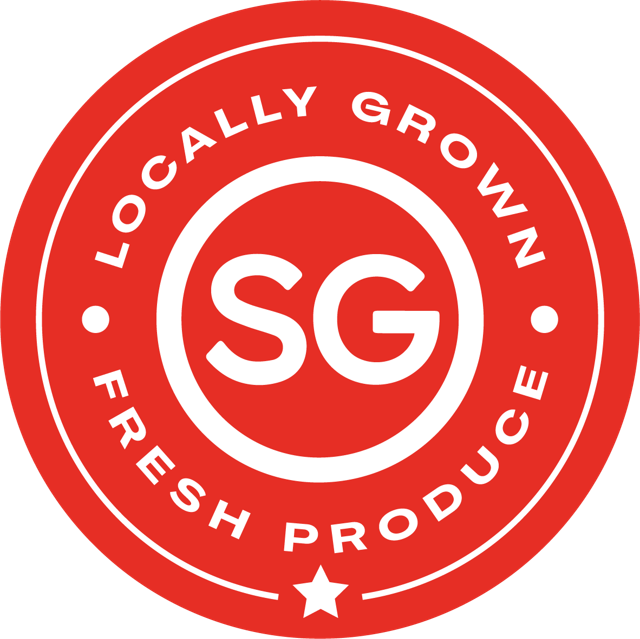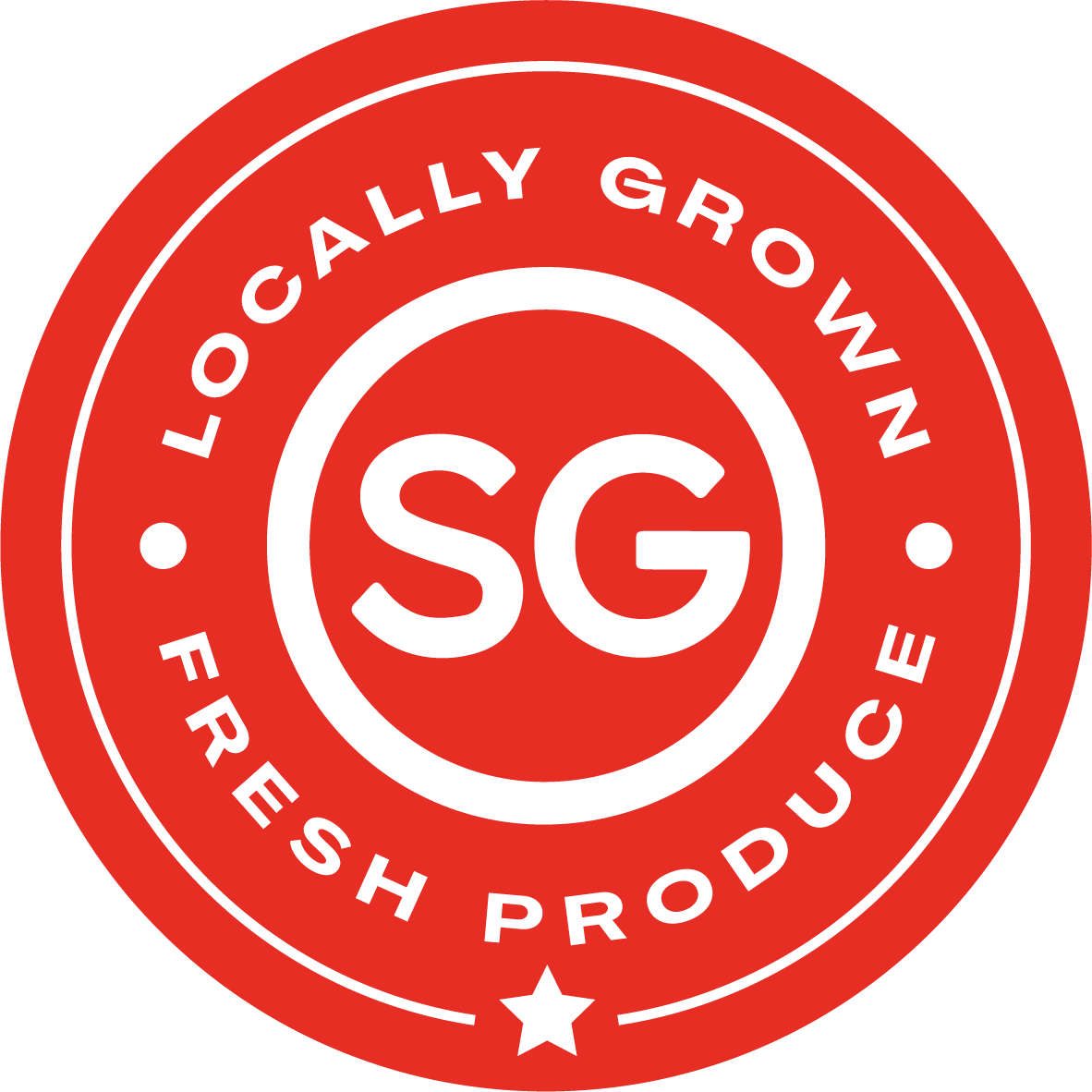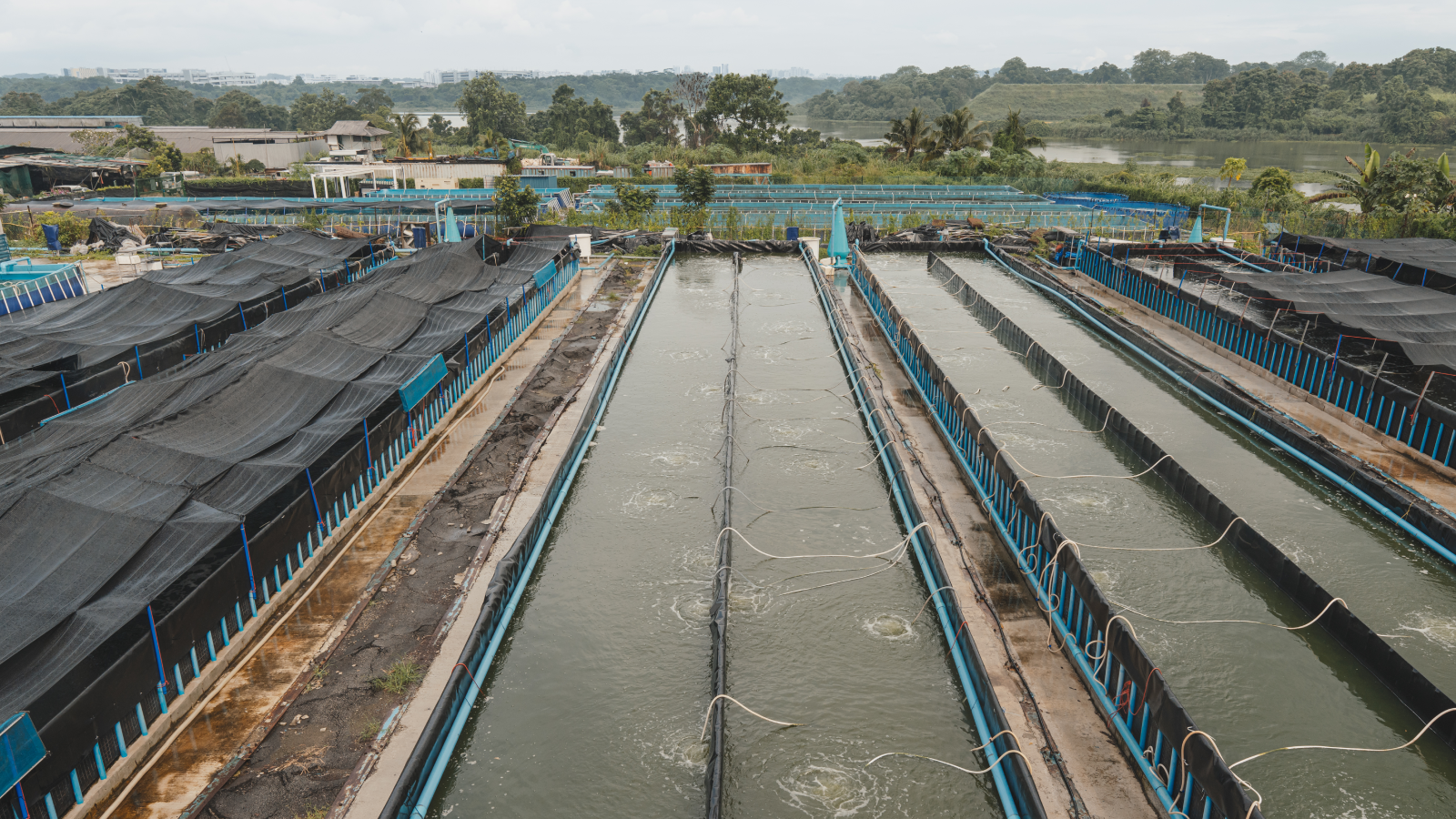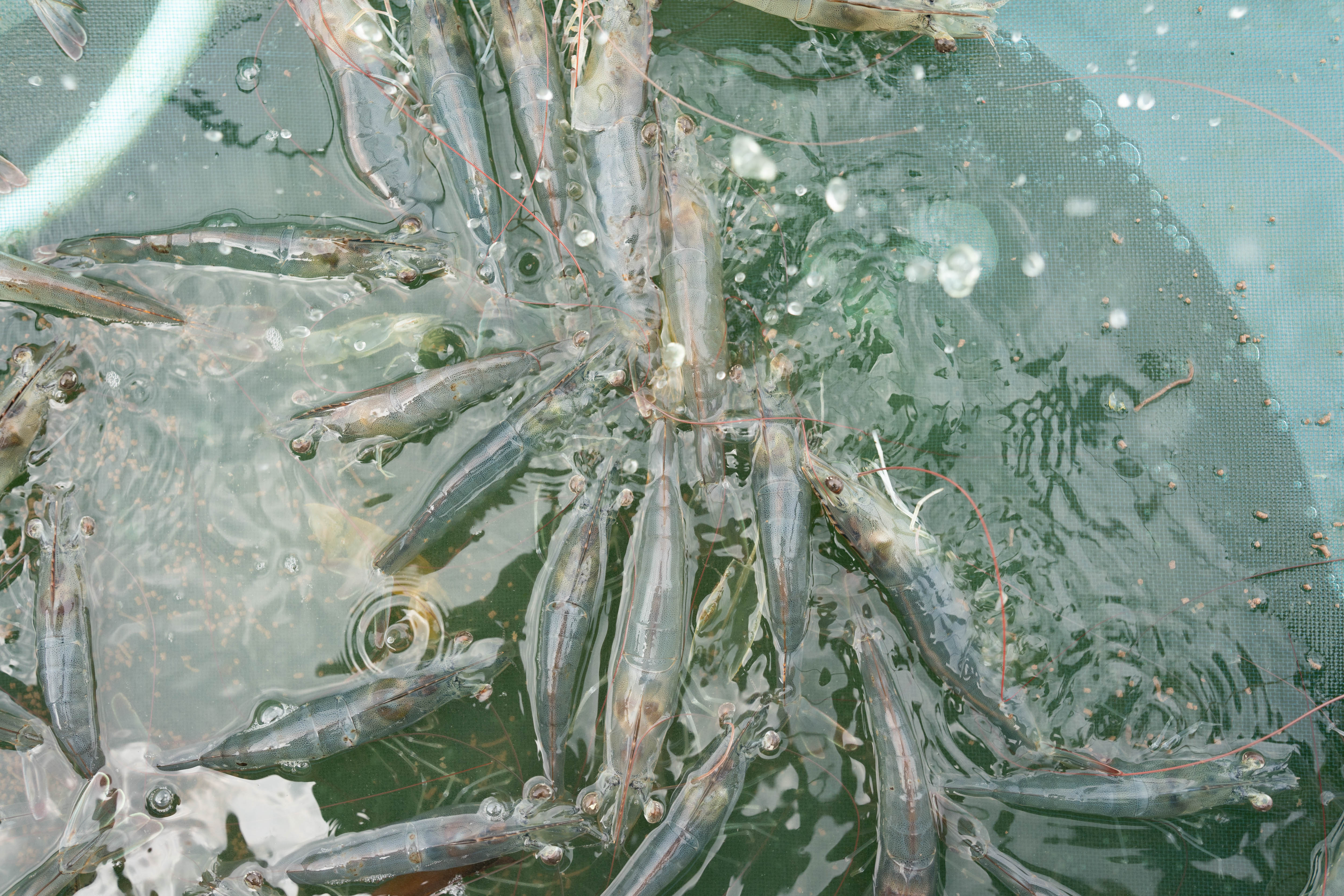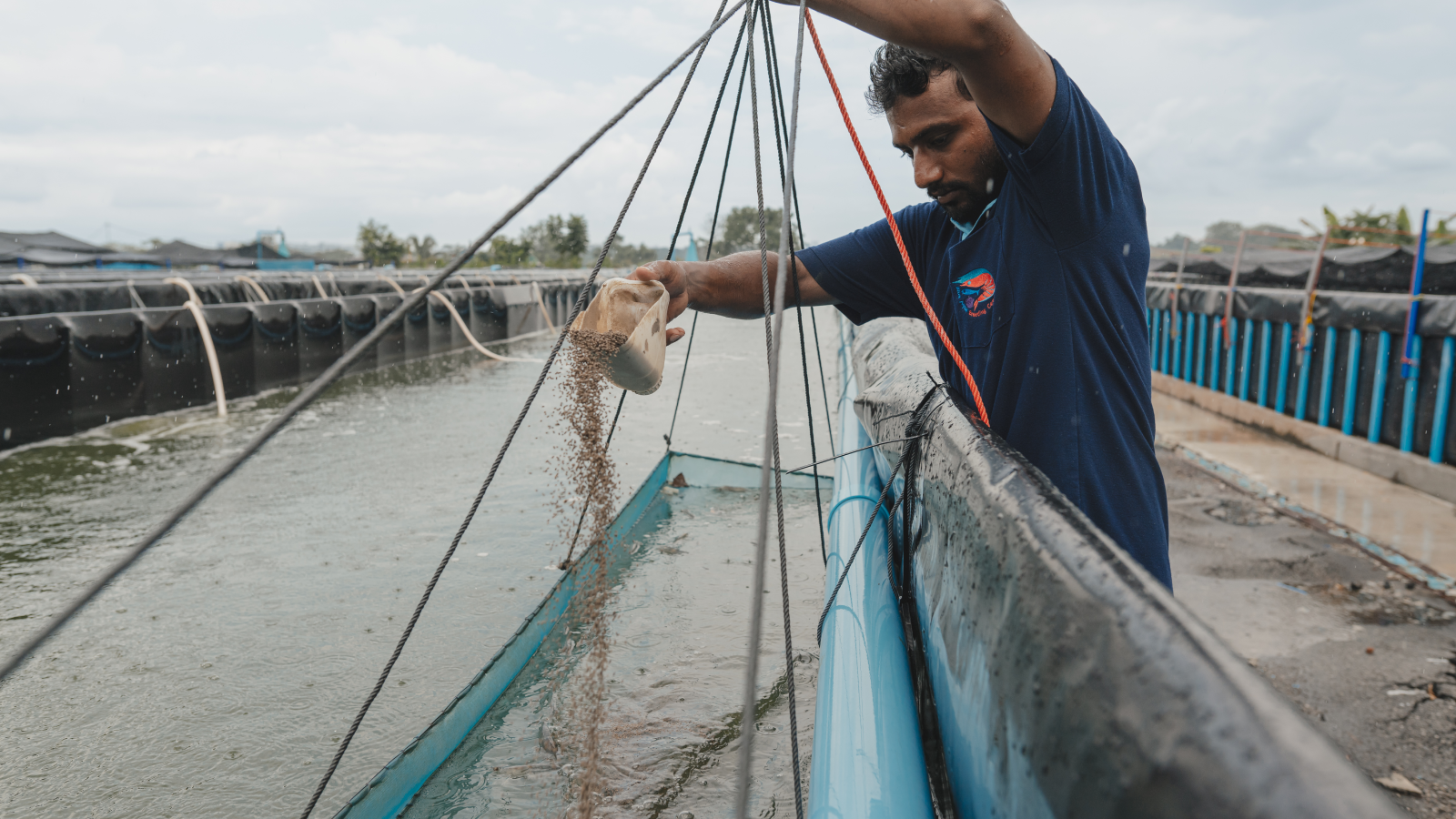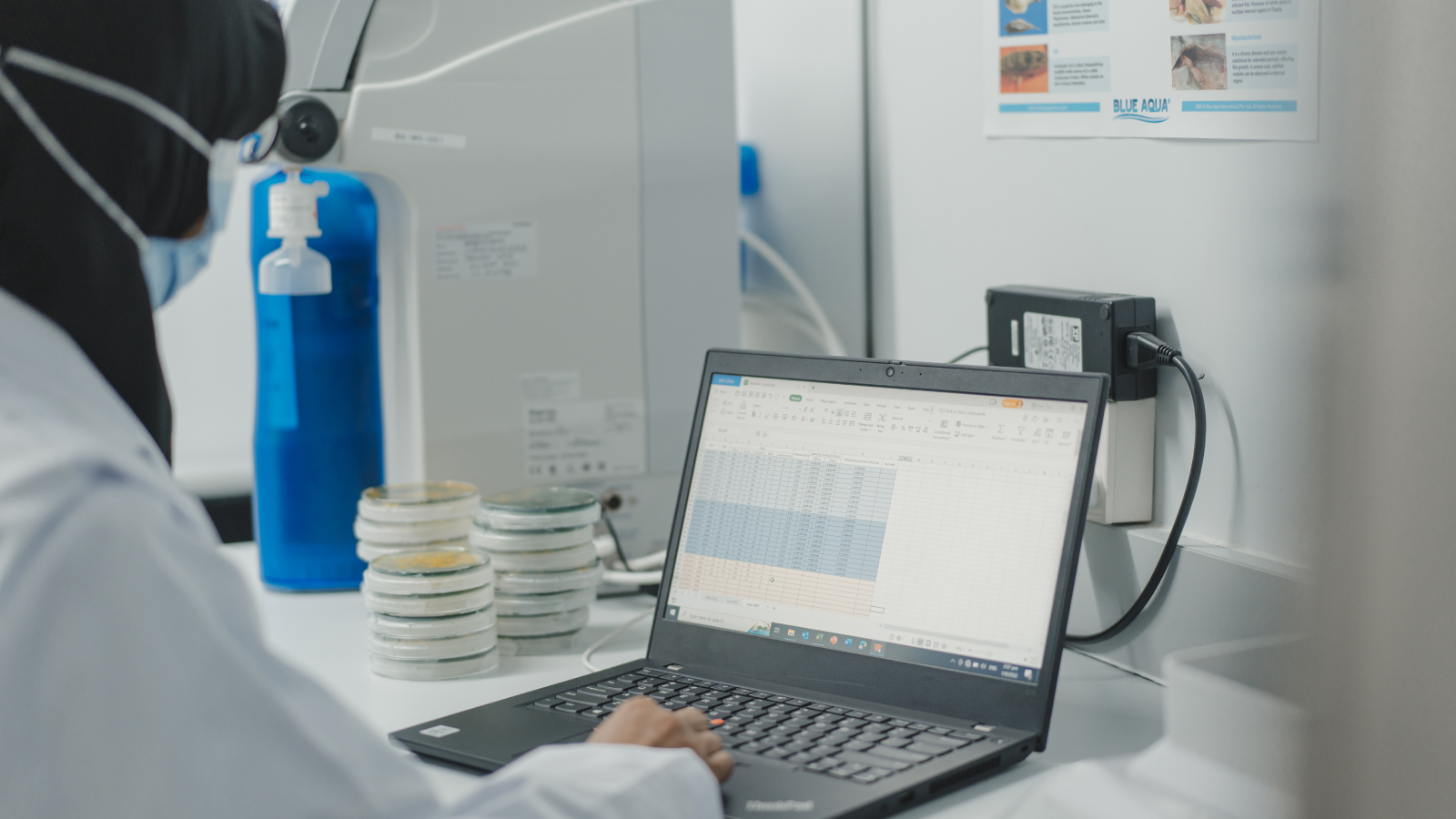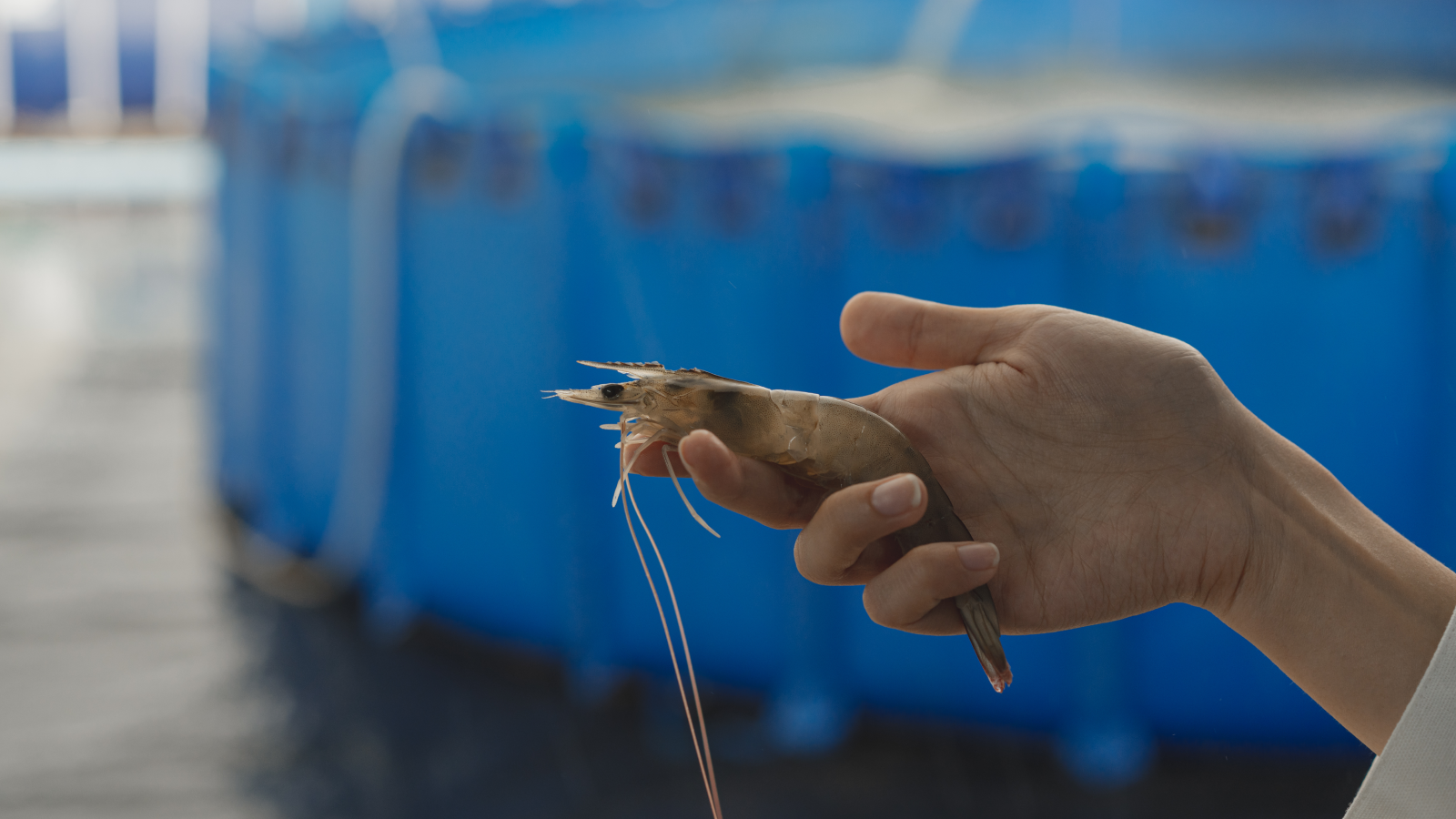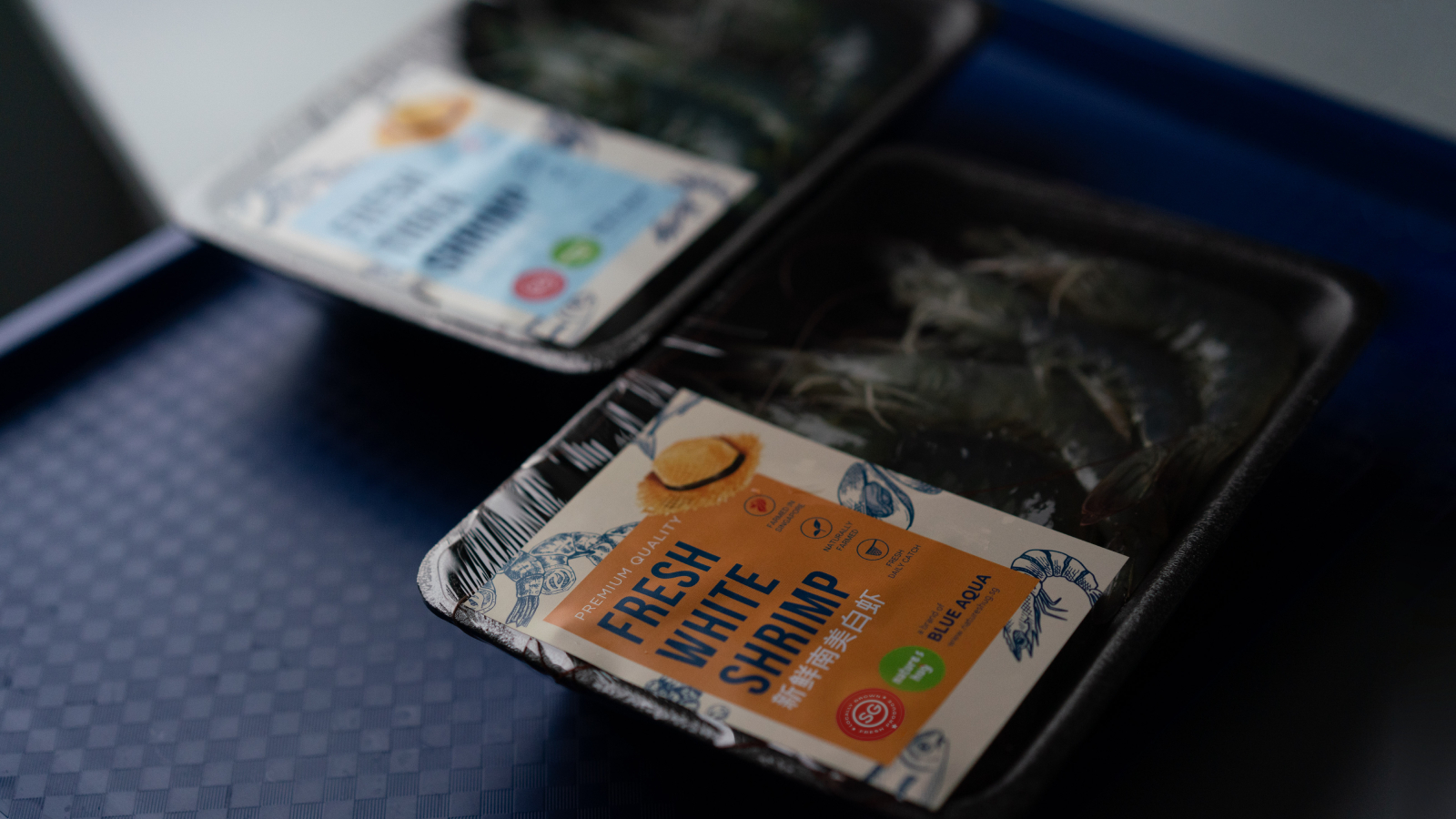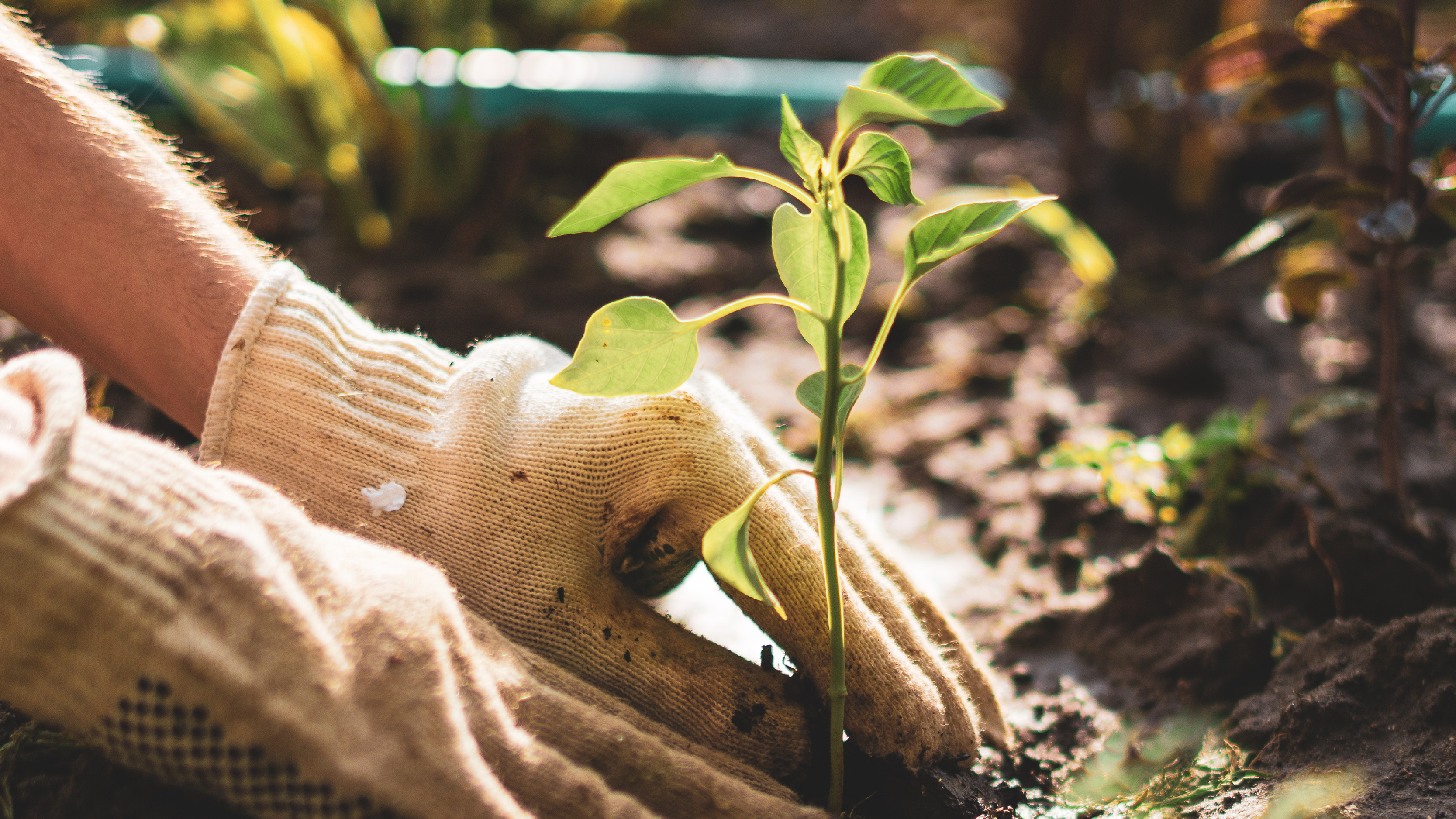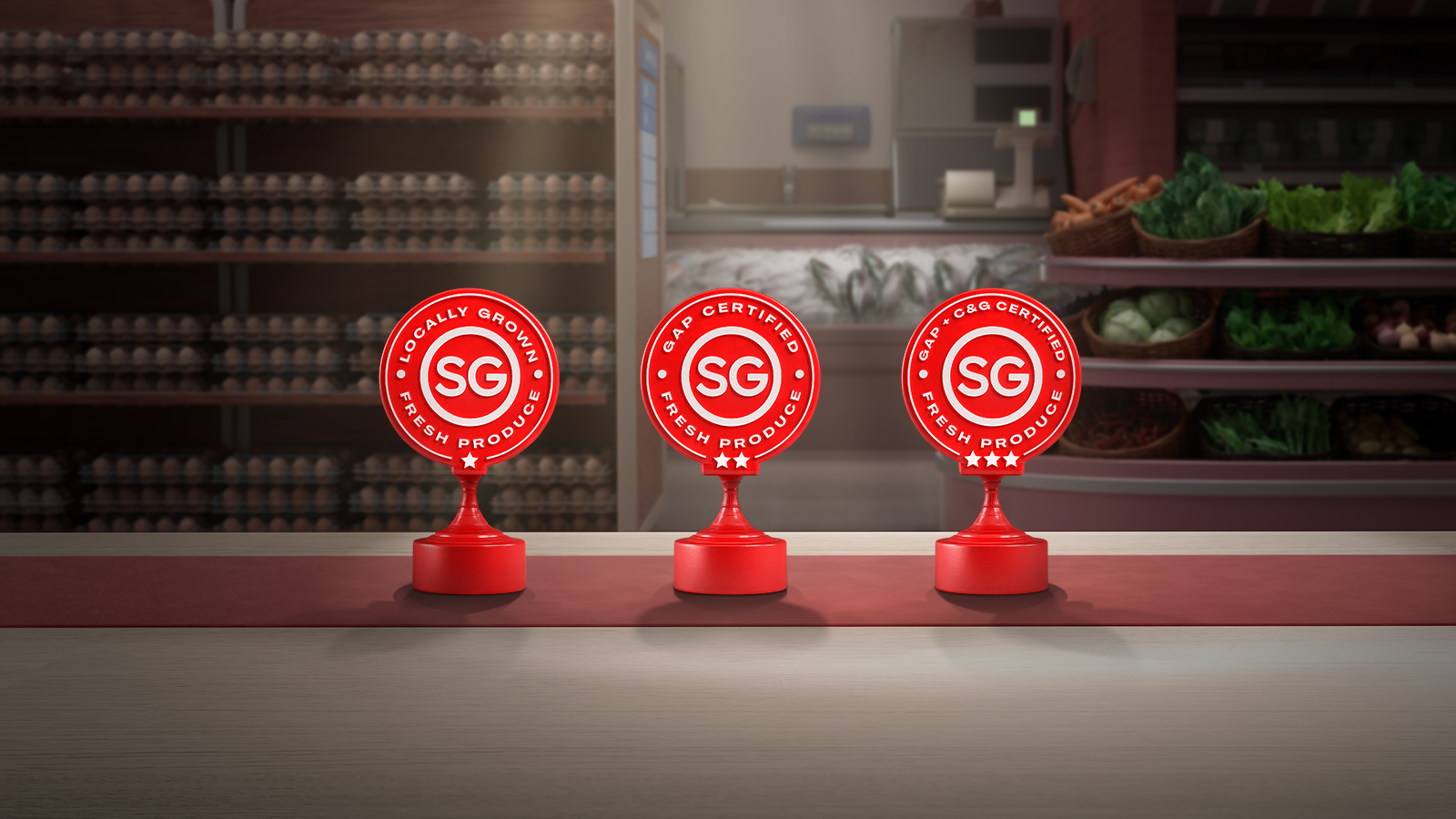Welcome to Blue Aqua International
First established by Dr Farshad in 2009, Blue Aqua International has become one of the leaders in shrimp farming in Singapore.
The subtleties of nurturing shrimp
Take a deep dive into the fascinating world of shrimp farming with Dr Farshad, as he unveils the many complexities of modern aquaculture.
Shrimp cocktail—An intricate ecosystem
Unlike many species of farm-reared fish—which often require crystal-clear water to survive— the shrimps at Blue Aqua International thrive in water of a much more complex composition.
Blue Aqua International’s MixotropicTM System introduces a mixture of phytoplankton and bacteria into the tanks holding their shrimps, turning them into fascinating ecosystems.
The phytoplankton is a source of food for microscopic animals called zooplankton, and both can be eaten by baby shrimp, or post-larvae. As the shrimps grow and begin to consume commercial feed, probiotic bacteria are introduced to the pond to reduce waste build-up.
The issue with automation
While Dr Farshad has worked on the possibility of automating various systems on the farm, the complexities of shrimp farming make automation unfeasible until technology has evolved.
“Think of Artificial Intelligence (A.I.) as the brain and automation as the arms,” Dr Farshad explains. “Shrimp farming is very complex. We’ve experimented with automating for feeding, but even in that case it’s difficult to implement. I’d say we’re at a 50% understanding of shrimp nutrition, while for salmon we’re at about an 80% understanding. Because of this gap, the A.I. isn’t precise enough to use regularly.”
Finicky factors of shrimp farming
Besides providing shrimp with sustenance, there’s a multitude of factors to consider when rearing shrimp.
While providing the shrimps with zooplankton to consume, the phytoplankton in Blue Aqua International’s MixotropicTM System also protects them from sunlight and predators.
This green system also deters cannibalisation as using clear water may cause the shrimps to be easily seen, leading to more cannibalism during moulting.
Disease management
Despite the shrimp farming industry having advanced over the decades, there has been a significant increase in the number of diseases that afflict farm-reared shrimp.
“There were only three major diseases when I first started farming, and now there are dozens,” Dr Farshad shares. “I believe that nutrition and genetics are key factors affecting disease within the industry—replacing fish meal with soybean meal and genetic selection at times. Sometimes when one gene is made dominant, it might suppress another important gene.”
Fascinating farm facts
Modern day farming is a fascinating profession. Here are some fascinating factoids to chew on!
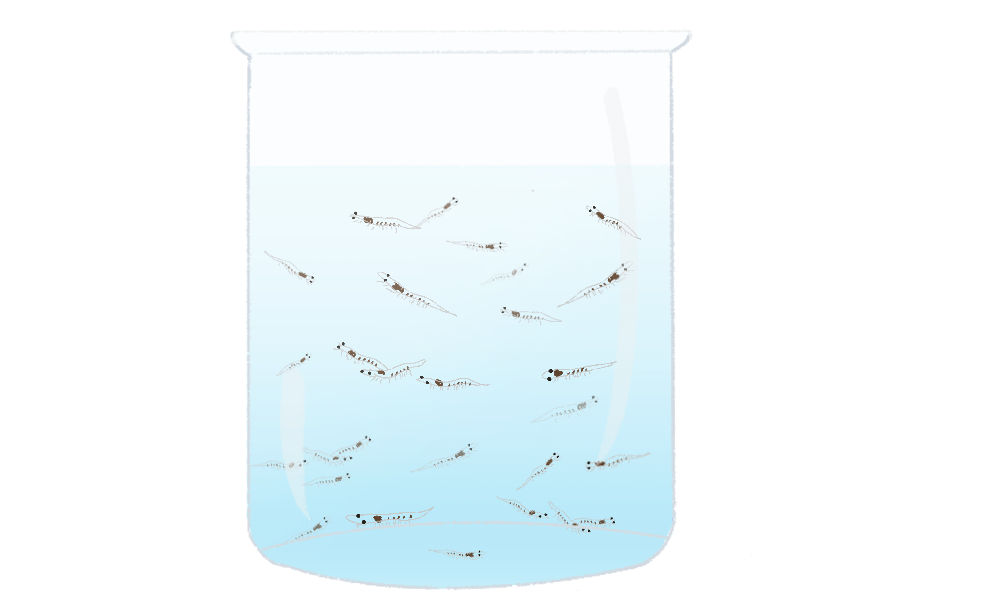
Besides fully-grown shrimp, Blue Aqua International boasts a local hatchery that nurtures over 100 million post-larvae shrimps a year.
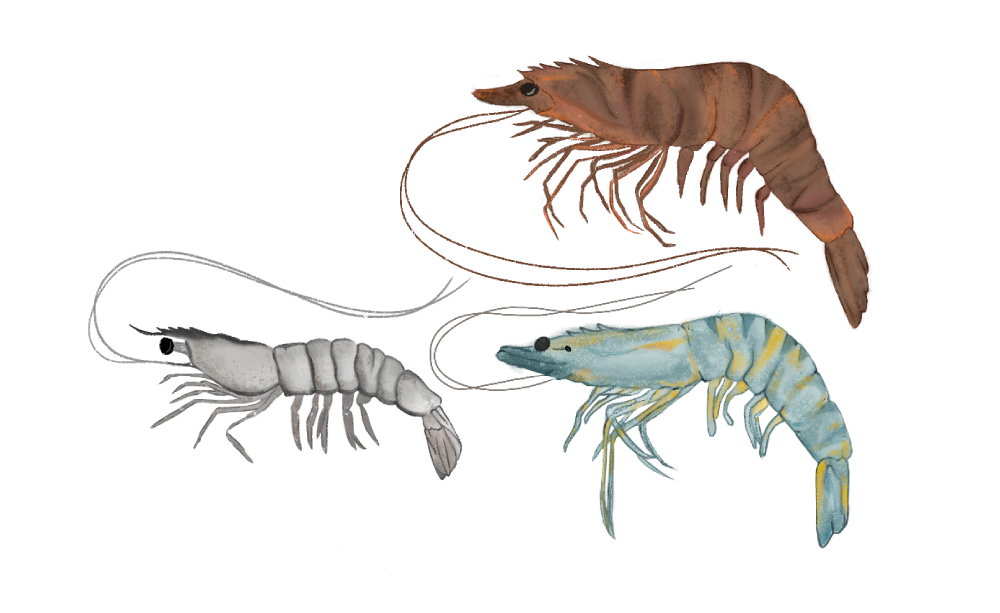
There are over 2,000 different species of shrimp, but the ones you’ll find at Blue Aqua include white shrimp, tiger shrimp and kuruma shrimp.
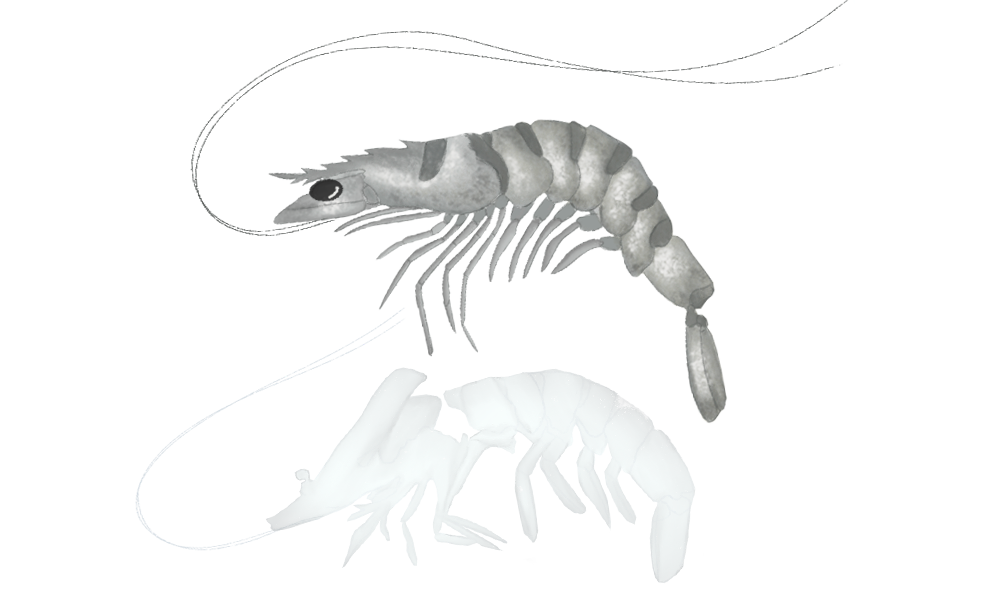
Unlike humans and fish, shrimps have an exoskeleton that they moult, creating new shells at various stages of growth. These new shells are soft and vulnerable in their early stages, making shrimp vulnerable to cannibalisation.
Feast for SG's food security
Eat local and do your part to support our local farming community.
Sample succulent seafood from Blue Aqua International by purchasing their shrimp from their website or at supermarkets across the island, like FairPrice Finest, Hypermarkets and CS Fresh stores. You’ll find Blue Aqua International’s shrimp under their house brand, Nature’s Hug.

